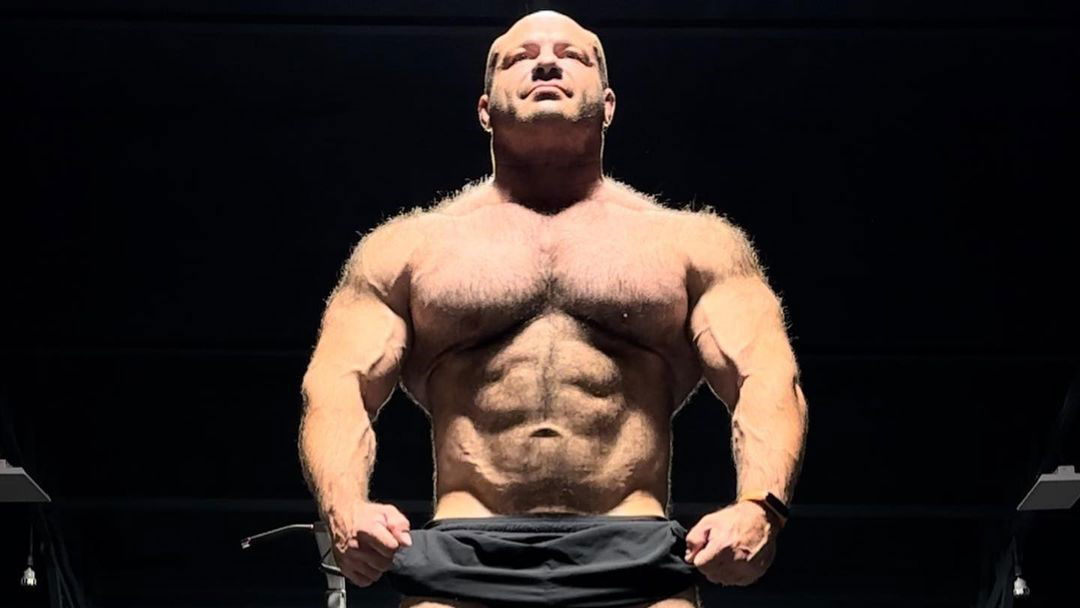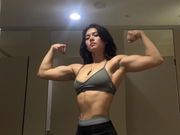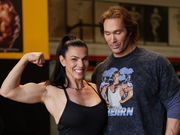

Range of motion has been a debated topic between bodybuilding experts and enthusiasts for a long time. Some swear that utilizing the maximum available range of motion yields the best results. Meanwhile, others limit the range of motion to maintain constant tension in the target muscle. However, exercise scientist Mike Israetel has highlighted research to settle the ‘ideal range of motion’ debate.
Watch What’s Trending Now!
The competitive bodybuilder explained that scientists tested three ranges of motions across several studies. “They’ve had studies that have taken the top half of range of motion… They’ve had studies compare that to a full range of motion, and then even comparing to the bottom half,” said Israetel. These studies aimed to find which ROM was most effective at muscle hypertrophy.
“Typically full range of motion beats top half by a mile,” said the exercise scientist. He explained that utilizing full ROM helps people grow more muscle “per unit time, per set.” However, this wasn’t all. Mike Israetel took the squat as an example, as many people prefer to spot at a 90-degree angle to the floor.
ADVERTISEMENT

ADVERTISEMENT
The bodybuilding coach said many studies found that “bottom-end partials” induced even more muscle growth than full ROM. While squatting, “going all the way from your heels touching your a** to 90 degrees and back down in this exercise. It seems that you grow even more muscle than with a full range of motion, which is very, very interesting,” said the exercise scientist.
More research is needed to determine whether long-length partials induce greater hypertrophy more reliably. However, Mike Israetel confidently explained that the top-end partials for exercises like the squat are not ideal. “Does it grow muscle? Yes. does it grow as efficiently and effectively as possible? No,” concluded the exercise scientist.
ADVERTISEMENT
Mirroring his dislike for top-end partials, Israetel is also not a fan of isometrics.
Israetel recommends developing equal strength in every plane of motion
Dr. Mike Israetel has criticized isometric holds while analyzing the workout routines of different celebrities. Celebrity coaches often tout the benefits of isometric holds, arguing that isometrics help develop strength in different planes, or ranges of motions while performing a single exercise. However, the exercise scientist argues that you need to develop equal strength in every plane of motion.
ADVERTISEMENT

ADVERTISEMENT
Whether he is analyzing Jake Gyllenhaal’s MMA training or NFL star Patrick Mahomes performing three-position pull-ups, Israetel recommends using the full range of motion. The exercise scientist explained that doing explosive pull-ups with controlled eccentrics would yield far better results instead of pausing to develop strength at three different positions.
So, while lengthened partials may have yielded promising results, the exercise scientist still recommends using the full range of motion. That’s because full ROM is achieved by combining top and bottom-end partials.
Top Stories
Everything You Need to Know About Mr. Olympia’s Sole Owner Jake Wood, Who Also Brought Ms. Olympia Back

Who Is Angie Feliciano? The Woman Jay Cutler Has Been Engaged to for 7 Years

Who Is Keiani Mabe? 22-YO Fitness Sensation Currently Going Viral for Her Stunner Physique

Bodybuilding Icon Mike O’Hearn’s Wife Reveals Training Secrets That Got Her Strong: “Work on the Negative”

Bullied for Her Staggering Height, 6ft Female Football Athlete Turned Bodybuilder Set to Feature in Gladiators’ Reboot

ADVERTISEMENT
ADVERTISEMENT
ADVERTISEMENT

